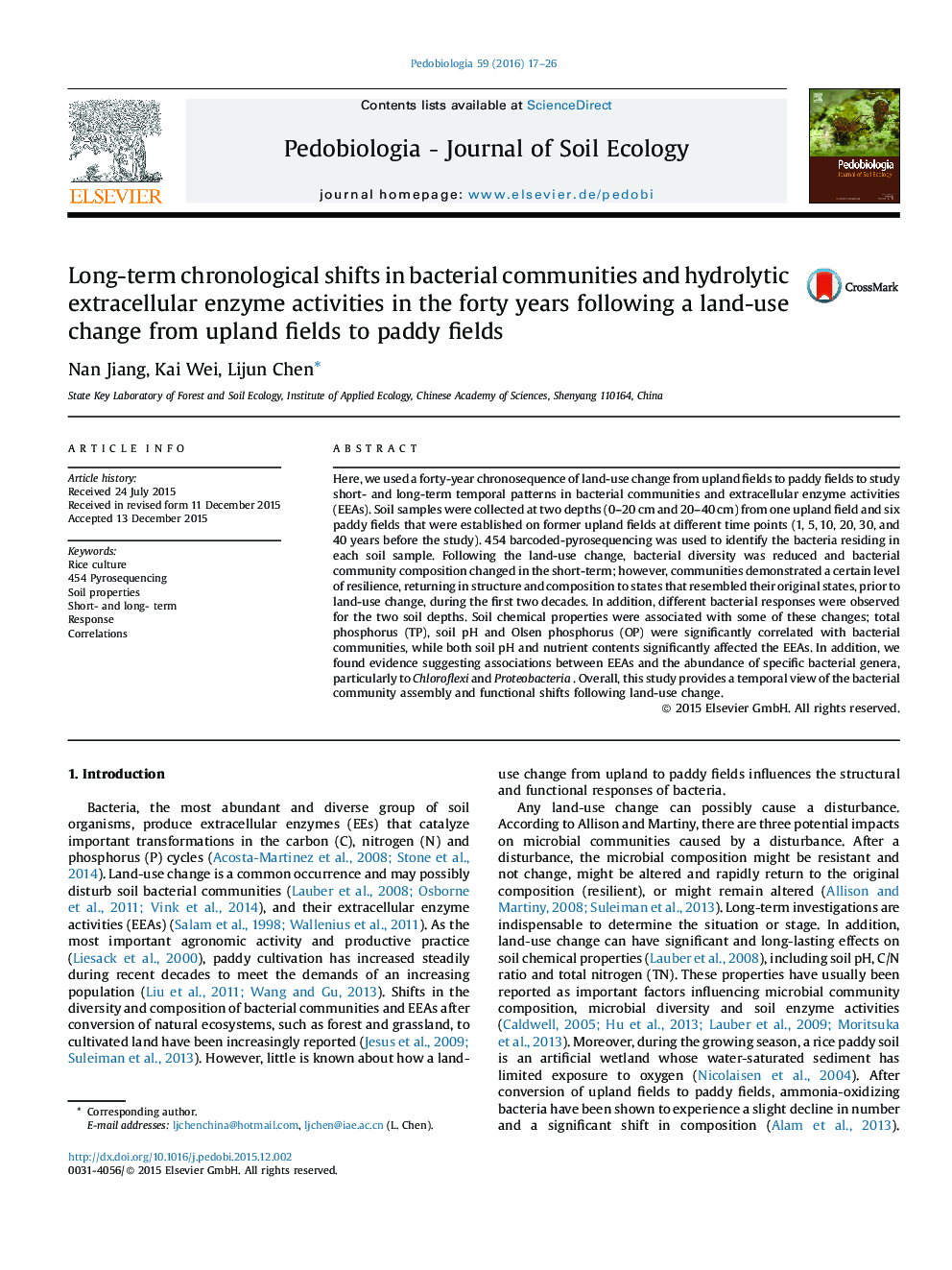| Article ID | Journal | Published Year | Pages | File Type |
|---|---|---|---|---|
| 2061163 | Pedobiologia | 2016 | 10 Pages |
•Shifting land-use has the potential to affect bacterial communities and functional properties at both short- and long-term.•We studied bacterial responses to land-use change, from upland fields to paddy fields, across a forty-year chronosequence.•Bacterial communities exhibited short-term compositional and structural shifts, but effects were reduced in the longer-term.•Responses were also associated with temporal patterns in soil properties after land-use change.
Here, we used a forty-year chronosequence of land-use change from upland fields to paddy fields to study short- and long-term temporal patterns in bacterial communities and extracellular enzyme activities (EEAs). Soil samples were collected at two depths (0–20 cm and 20–40 cm) from one upland field and six paddy fields that were established on former upland fields at different time points (1, 5, 10, 20, 30, and 40 years before the study). 454 barcoded-pyrosequencing was used to identify the bacteria residing in each soil sample. Following the land-use change, bacterial diversity was reduced and bacterial community composition changed in the short-term; however, communities demonstrated a certain level of resilience, returning in structure and composition to states that resembled their original states, prior to land-use change, during the first two decades. In addition, different bacterial responses were observed for the two soil depths. Soil chemical properties were associated with some of these changes; total phosphorus (TP), soil pH and Olsen phosphorus (OP) were significantly correlated with bacterial communities, while both soil pH and nutrient contents significantly affected the EEAs. In addition, we found evidence suggesting associations between EEAs and the abundance of specific bacterial genera, particularly to Chloroflexi and Proteobacteria . Overall, this study provides a temporal view of the bacterial community assembly and functional shifts following land-use change.
